
Profile
Ishikawa Toshimitsu studied Kinko-ryu shakuhachi music and other classic honkyoku (solo compositions that were played by the zen priests, Komuso,in a form of meditation known as suizen) under YokoyamaKatsuya.
He graduated first in the 37th term of the Japanese music school,NHK Hogaku Ginosha Ikuseikai, and also passed the NHK audition.
In 1995,he was trained as an intern of the Arts and Culture division of the Japanese Agency for Cultural Affairs. Supported by the Japan Foundation, or invited by other sponsors, Ishikawa has performed in many foreign countries such as India, the United States, Switzerland, Austria, Poland, Belgium, Germany, Australia and Singapore.
The following are the major prizes Ishikawa has won.The Shorei-Shinjin prize at Osaka Arts Theater’s (1996), the Shorei prize at the 3rd All Japan Hogaku contest(1997),The Shinjin prize at the 59th arts festival, sponsored by the Japanese Agency for Cultural Affairs(2004), Aoyama Barocksaal prize(2005), The Yu-shu prize at the 63th arts festival, sponsored by the Japanese Agency for Cultural Affairs(2008).
Over the past few years, Ishikawa has produced the following CD recordings: A series of “Ikkan Ken-mei(solo Honkyoku pieces)I,II,III”.”Shakuhachi Roman(Masterpieces of Fukuda Rando)”. In addition to his solo works, he participates in the shakuhachi ensamble,”Fudo(children of the wind)”, where he is actively performing in concerts, radio broadcasts, and making CD recordings.
Besides being a representative of the Osaka Hogaku Solisten, Ishikawa also presides over his organization, Ishi no kai, and is a permanent Instructor for the International Shakuhachi Kenshukan.
- Address:1-15-20-706 Nishiokamoto, Higashinada-ku, Kobe-shi, Hyogo-ken 658-0073,JAPAN
- Email: shopping★shaku8-ishikawa.com (please change ★to @)
Discography
Solo CD “Ikkan ken-mei (In Dead Earnest)”
ISHIKAWA Toshimitsu
Classic Masterpieces of Shakuhachi
Recorded in May 2000
Price: 2500 yen (sold out)
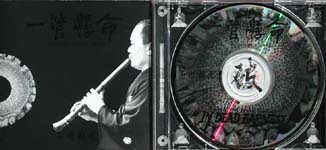
This CD of the classic “honkyoku” pieces that have been taught
in Yokoyama Katsuya’s school, would be the most suitable for your self
education, as the instrument used here is the shakuhachi of the most common
length, isshaku-hassun (1.8′ – Key of D).
You may also purchase the CD at the site of Monty Levenson.
Click the title to hear the sound |
Second Solo CD “Ikkan ken-mei 2 (In Dead Earnest 2)”
ISHIKAWA TOSHIMITSU
Classic Masterpieces of Shakuhachi
Recorded in October 2002
Price: 2500 yen
This CD of the classic “honkyoku” pieces that have been taught
in Yokoyama Katsuya’s school, would be the most suitable for your self
education, as the instrument used here is the shakuhachi of the most common
length, isshaku-hassun (1.8′ – Key of D).
You may also purchase the CD at the site of Monty Levenson.
|
Solo CD “Ikkan ken-mei 3 (In Dead Earnest 3)”
ISHIKAWA Toshimitsu
Classic Masterpieces of Shakuhachi
Recorded in April 2008
Price: 2500 yen
Click the title to hear the sound |
Shakuhachi Roman
ISHIKAWA TOSHIMITSU
Fukuda Rando masterpieces, with piano KARAOKE (minus one) version
Recorded in June 2005
Price: 3000 yen (sold out)
(Karaoke version)
Click the title to hear the sound |
Other released CDs
Shakuhachi
“Miyamahigurashi“(Fukuda Rando)
(C)Nihon Cultures co.,Ltd.
(sold out)
FUDO
“Daiyon FUDO” (Kineya Seiho)
(C)1994, KYOTO RECORDS
(sold out)
Eisler songs
“Komm ins Offene, Freund!” (Holderlin)
(C)1998, opera club office
Shigin
(C)Kawata Chiharu, 1997
The heart of the Japanese classic in the album IN DEAD EARNEST
The shakuhachi music that has been developed by the many artists of the
world seems to be gaining a popularity as what we call “World music”.
The surprising expressive power due to the wide dynamic range and the lyrical
tone colour — besides these attractiveness, shakuhachi holds a unique
spirituality in itself.
To consider the history of shakuhachi and the philosophy behind the expression,
Honkyoku (basic pieces) is an indispensable key point, for that shakuhachi
used to be, and still is, a peculiar instrument of the religious training
of Zen Buddhism.
After the Sengoku period (1467-1568), the number of samurai who lost their
masters in the succeeded wars became wandering Buddhist priests called
komuso. The number of komuso formed Fuke sect of Zen, and composed the
most of the Honkyoku that remains today, to play in their religious mendicancy.
Naturally, The basic intellects of samurai, Bujutsu (military arts) and
Zen Buddhism were reflected in the composition of komuso. For an example,
the word to explain the rhythm of Honkyoku, “Ma (distance)” is
also an important idea of Bujutsu and Zen. In Bujutsu, the distance between
two blades decides which one to survive. According to the philosophy of
Zen Buddhism, reality is in the distance between a man and nature. What
makes a good expression is the right distance between two notes and two
phrases, and how deeply the player consider the meaning of “Ma”
decides the quality of his performance. In this way, Honkyoku exists as
a way of the introspection, to see ones philosophical achievement.
Toshimitsu Ishikawa gives each one of the old tunes a life again, to make
the heart of the Japanese classic audible. His music is not talkative,
but you will hear the nothingness between two phrases really speaks.
Concert Schedule | Workshop Schedule | Photo Gallery | Contact form
This page is written or translated by Matsumoto Taro
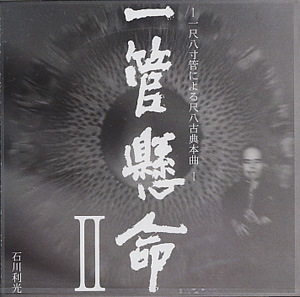
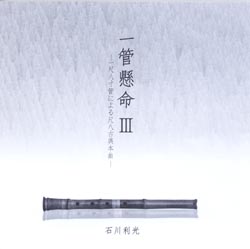

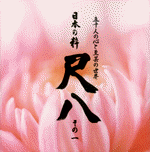
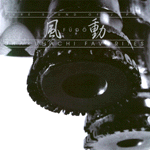

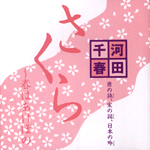
“Ishikawa Toshimitsu (Shakuhachi player)” に対して1件のコメントがあります。